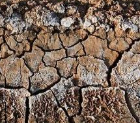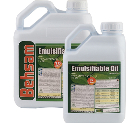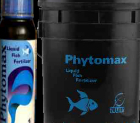
National selection of top producer of
poison and fertilizer
in Iran
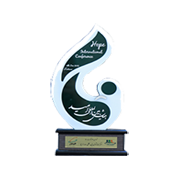
Omid International Conference
International Conferences Center
In Tehran

Omid Second International Conference
International Conferences Center
In Iran

Omid Third International Conference
International Conferences Center
In Iran

Omid Fourth International Exhibition
International Conferences Center
In Tehran
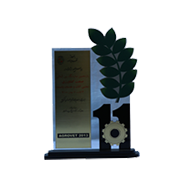
11th International Agricultural Industry
Exhibition
Machinery and related services

Second Specialized Agricultural Exhibition
The permanent location of
the Bustan fairs
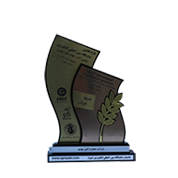
11th International Agricultural Fair
Premier Booth
In Iran

Sixth specialized exhibition
Tehran Agricultural Agencies
In Iran

National Award for Top
Manufacturing Unit
In Iran-gazvin

First place
Safir Cup Tournament
In Winter

Top Team
Ramezan Cup Tournament
TehraniMoghadam
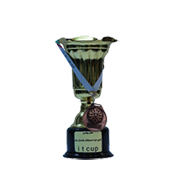
Third place
Safir First Futsal Cup Tournament
itcup


Sprayer calibration
Adjusting the sprayer to spray a certain amount of toxic solution per hectare with a predetermined diameter of the drain and a certain number of drains per square centimeter is called calibration. Calibration is the determination of the amount of toxic solution that is spread by the sprayer in a specific surface unit (... read more
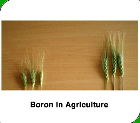
Benefits and applications of boron for plants
The element boron, abbreviated B, is one of the microelements that affects the growth and health of all plants. Boron is present in the cell wall structure of plants and is involved in the reproduction of all plants. Boron is a mobile element in the soil and is transferable. Since this capability is necessary for microelements in small quantities to meet the needs of the plant, traditional fertilizer feeding has tried to meet the deficiency of this element. However, boron deficiency is... read more
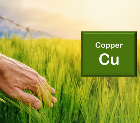
The role of copper in the plant
Copper is mostly involved in the enzymatic activity of the plant. The presence of this element in oxidase-catalase enzyme systems is essential. It is also involved in the production of chloroplasts and electron transfer reactions and activates several enzymes. Copper activates some enzymes that are effective in the synthesis of lignin in plants and is essential in several enzyme systems. It is also required in the process of photosynthesis, is essential in plant respiration and helps in the metabolism of carbohy... read more

Potassium and its role in plants
Potassium, like nitrogen and phosphorus, is one of the most needed nutrients in plants. The amount of potassium in the earth's crust is about 1.9 to 2.3 percent (the amount of total potassium in agricultural soils is between 0.5 to 2.5 %، However, that part of the total potassium in the soil that can be exchanged or used in the plant is insignificant. The amount of potassium that is absorbed by the plant is equal to the amount of nitrogen used b... read more
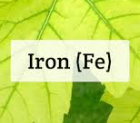
The importance of iron in plants
Iron is one of the most important and essential micronutrients for all plants. Iron deficiency is one of the most common nutrient deficiencies in orchards and agriculture of most agricultural areas of the country. An important point to note is that all micronutrients except molybdenum are inaccessible to plants by increasing the pH of the culture medium, but become absorbable to plants by decreasing the pH of the culture medium. The ideal pH range for plants varies depending on their a... read more
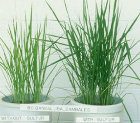
Role of sulfur in plants
The fourth most important and Consumption element for plants after nitrogen, phosphorus and potash is sulfur, With the difference that plants need this element even more than phosphorus. Due to the fact that most of the soils of the country, especially the soils of the Iranian plateau, are alkaline and calcareous, and on the other hand, the lack of organic matter and bicarbonate of most irrigation water limits the solubility of high nutrients and micronutrients and is practically absorbed. These elements occur s... read more

An overview of the principles and methods of mixing pesticides and chemical
Mixing pesticides and fertilizers is combining two or more pesticides or fertilizers together and spraying them on the target plant (pistachio tree, weed, etc.). Mixing pesticides or fertilizers is mainly to save time and money of spraying, while there are several pests and diseases in the garden or farm at the same time. Mixing two or more different pesticides together or mixing them with fertilizers (foliar fertilizers) or combining with adjuvants or additives is an action that is economical and reduces the co... read more

The role of silicon and its application in plants
Silicon in plants increases the growth and yield of agricultural products, increases tolerance to abiotic stresses such as cold, drought, high and low temperatures, salinity and toxicity due to the accumulation of heavy metals such as aluminum, cadmium, arsenic and manganese and solar radiation. It also increases tolerance to biological stresses such as pests and diseases... read more

Additives(Adjuvants)
Additives(Adjuvants)
Adjuvant is an additive in a pesticide that, when added to a spray solution, improves the physical properties or modifies and increases the biological activity of the pesticide. Like additiv... read more

Properties of Dioctyl Adjuvant
under the brand name of Dioctyl and as a wetting and dispersing agent is considered in the pesticide industry due to having both hydrophilic and hydrophobic properties and regarding its special chemical structure, but what is less noticed is its insecticidal properties. The chemical formula of sodium salt is C20H37NaO7S. Its oral toxicity for female mice is 1900 mg/kg. Its acidity in aqueous medium is between 6.5 to 7.5.
This combination has many properties that makes it special:
- pest... read more
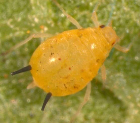
Different exposure methods to neonicotinoids influenced biochemical characte
We measured lipid, carbohydrate and protein content in three strains of cotton aphid, Aphis gossypii (Hemiptera: Aphididae) from very resistant to neonicotinoids up to semi sensitive and sensitive strains in different exposure method of spraying to neonicotinoids. We observed changes in energy source rates at which each substrate was metabolised under starvation, selection and residue stress method spraying that assist in metabolisation of their biochemical parameters. These particular exposure methods influence... read more
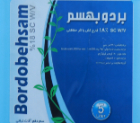
Bordo Behsam
Shot hole with the causal agent Wilsonomyces carpophilus is one of the most important diseases on apricot. Every year it causes quantitative and qualitative damage on many areas in Iran. Copper- based fungicides such as Bordeaux mixture are usually used for the chemical control of this disease in the world although the others fungicides are suggested.
... read more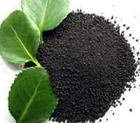
The role and importance of the use of humic acid in sustainable agriculture
Today's population growth requires human beings to supply more food, and this has led to the development of surface and depth of land for further production. Application of deep development patterns has led to a widespread use of agricultural inputs, in particular the increased use of pesticides and various chemical fertilizers. In the pursuit of agricultural activities combined with the increasing use of chemical fertilizers for the production of more food, a large amount of waste is introduced into the env... read more

Sustainable agriculture
Agriculture is the concept of ways and means of exploitation of water resources and energy, which has always been based on many economic, social, political and cultural developments throughout the world in order to meet the needs of people's food and shelter throughout history, so that today agricultural and agricultural development It is a driving force behind the development of rural areas in general.
Sustainable agriculture is a kind of farming that is in the interest of mankind, has more effici... read more
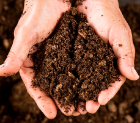
WHAT IS PEAT?
PEAT is sedimentary mineral formed by partial natural decomposition (decay) of marsh plants. Besides plant residues, peat consists of humus (60%) and mineral particles (part).According to the decomposition degree, peat is also divided into three groups: weakly decomposed, medium decomposed and strongly decomposed. The decomposition degree depends mainly on the age and condition of formation, and therefore the color of peat varies from light brown to brown-black.
There are thr... read more

